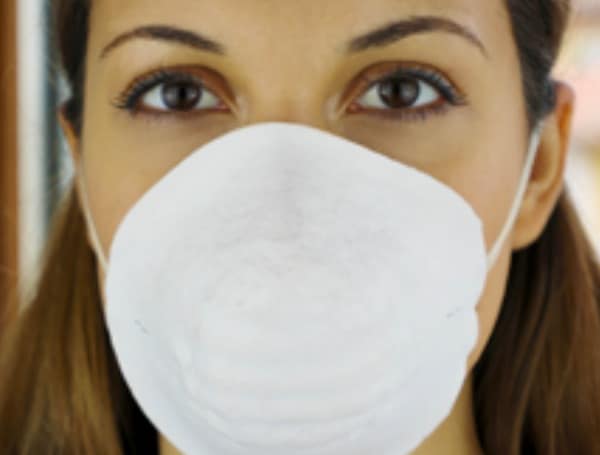TFP File Photo A recent study found that wearing masks isn’t effective in preventing how many people from catching COVID-19 or other flu-like illn
A recent study found that wearing masks isn’t effective in preventing how many people from catching COVID-19 or other flu-like illnesses, and most major news outlets aren’t covering it.
The Cochrane Database of Systematic Reviews published the study, whose intent was to find how effective “physical interventions,” like wearing masks and washing hands, are in stopping the spread of these viruses.
Though they found wearing masks isn’t effective.
“Wearing masks in the community probably makes little or no difference to the outcome of influenza-like illness (ILI)/COVID-19 like illness compared to not wearing masks,” the study found.
In the news: NYC Busing Illegal Migrants To The Canadian Border “Helping In Reticketing Process”
In November, the NYT reported on a case study from the New England Journal of Medicine that found that mask mandates in schools were effective in stopping the spread.
Last year, the Post reported on a case study from the Centers for Disease Control and Prevention that found that wearing N95 and KN95 masks were the most effective in halting COVID-19.
In 2020, The Free Press reported that researchers at UMass Lowell and California Baptist University said that re-wearing a dirty mask or wearing it improperly to stop the spread of COVID-19 can actually be worse than not wearing a mask at all.
Researchers assumed a 65% filtration efficiency of the mask, which is typical for a three-layer surgical mask.
“Much to our surprise, by assuming zero filtration efficiency, wearing a mask leads to significantly higher deposition on the face for all particles considered (1 µm–20 µm) and in the airway for particles of 1 µm–10 µm [Fig. 7(a)]. With a 65% filtration efficiency, which is typical for a three-layer surgical mask, the corrected face deposition falls below the unmasked DFs for all particles, despite a close match for 15-µm particles,” as written in the study.
In the news: Florida Dems Differ On Death Penalty Changes
The study says a comparison of particle deposition on the face with and without a mask is shown in the figure below, for different particle sizes. Smaller particles give rise to more dispersed deposition on the face, regardless of wearing a mask or not.
Researchers say, “The deposition intensities were also compared with and without a mask in terms of the DEF in the third and fourth rows, as shown in the figure above, respectively.”
“Again, the dispersed deposition for 1-µm particles, the increasingly concentrated deposition on the nose and forehead with particle size, and the higher deposition on the philtrum are more vividly displayed with the clear contrast of the DEF colors.”
The study finds that masks slow down airflow and, with larger breaths, make a person more likely to breathe in particles, especially if the mask efficacy is limited.
A dirty mask is much worse and can’t filter out the smallest particles or droplets, according to the study.
Android Users, Click Here To Download The Free Press App And Never Miss A Story. Follow Us On Facebook Here Or Twitter Here. Signup for our free newsletter by clicking here.

